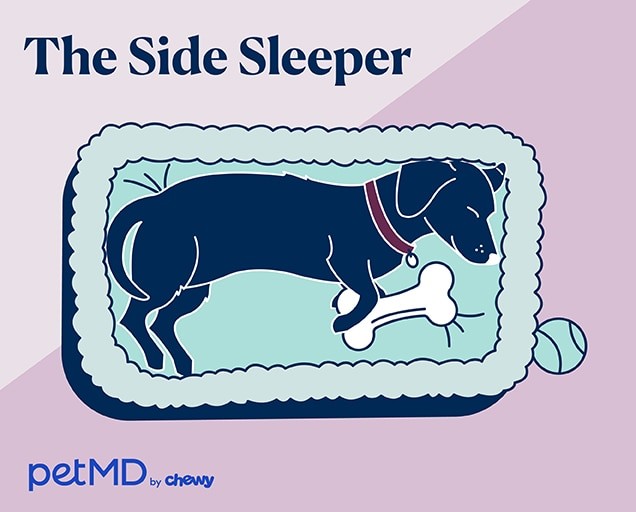Dogs, our beloved furry companions, often sleep in a variety of curious positions. From sprawling on their sides to curling into a tight ball, these positions can offer insights into their comfort, personality, and even health. But Why Do Dogs Curl Up To Sleep, specifically? Let’s delve into the fascinating world of canine sleeping positions and uncover the reasons behind their chosen slumber styles.
Common Dog Sleeping Positions and Their Meanings
Understanding a dog’s sleeping position can help us better understand their needs and feelings. Here are some common positions:
The Side Sleeper
This common position, with legs extended and belly partially exposed, indicates a dog feels safe, comfortable, and deeply relaxed. A vulnerable belly signifies trust in their environment. They may even exhibit those adorable dreamy paw twitches during deep sleep. This position is often favored by happy-go-lucky dogs who can easily relax anywhere.
The Lion Pose
With their head resting on their paws, dogs in the lion pose are often in a light sleep, ready to spring into action. This position allows them to stay alert while resting. While it can signal alertness and loyalty, it can also indicate underlying anxiety, as the dog is prepared to react quickly to any perceived threat.
The Superman
Energetic and playful breeds often adopt this position, lying on their stomachs with legs stretched out like Superman in flight. This posture reflects their playful nature and boundless energy. It allows for a quick transition from sleep to playtime.
The Belly-Up
Sleeping on their back with belly fully exposed demonstrates ultimate vulnerability and trust. This position allows for efficient body temperature regulation, as the belly has less fur and can release heat more easily. While common in playful puppies and confident dogs, senior dogs might avoid this due to potential spinal pressure.
The Donut
This is where the question “why do dogs curl up to sleep?” becomes most relevant. Curling into a tight ball, nose to tail, conserves body heat and protects vital organs. This position is common in dogs feeling cold, insecure, or anxious. It’s a natural instinct to preserve warmth and create a sense of security. However, it can also indicate illness, so monitor your dog for other symptoms if this is unusual behavior.
The Cuddle Bug
Cuddle bugs crave closeness and affection, often snuggling up to their human companions or other pets. This reflects their social nature and strong bond with their loved ones. They thrive on physical contact and enjoy sharing body heat.
Why the Donut Position? Conserving Heat and Seeking Security
The donut position, where a dog curls up into a ball, is a primal instinct rooted in survival. By minimizing surface area exposure, they conserve body heat, keeping themselves warm in colder temperatures. This position also protects vulnerable organs, offering a sense of security and safety. Think of it as creating a warm, secure den.
Conclusion: Sleeping Positions as a Window to Your Dog’s World
Observing your dog’s sleeping positions can provide valuable insights into their well-being and personality. While many factors influence their chosen posture, curling up in a donut often signifies a need for warmth and security. Understanding these nuances strengthens the bond with your furry friend, allowing you to better cater to their individual needs and ensure a comfortable and restful sleep.
